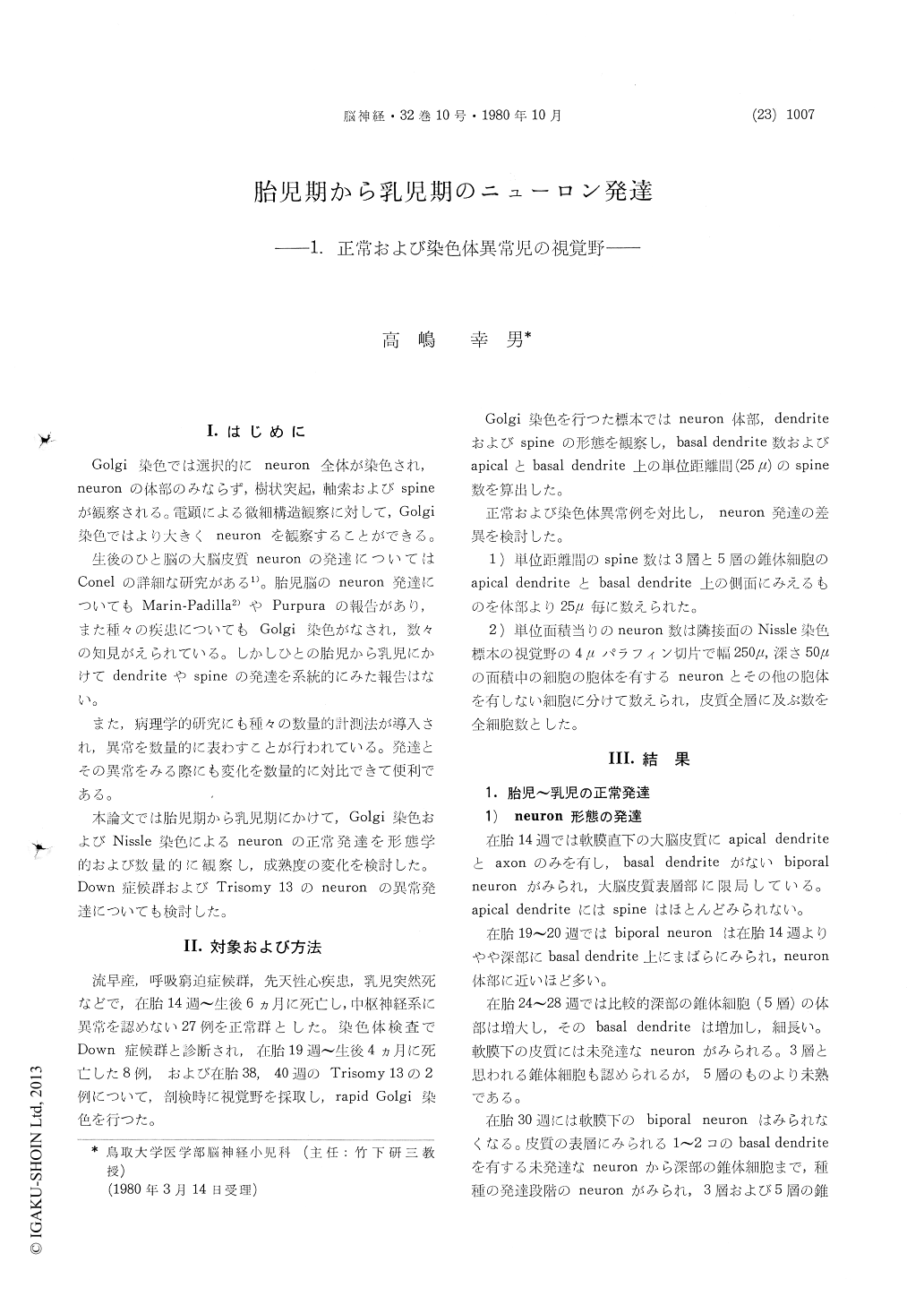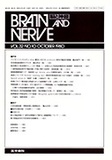Japanese
English
- 有料閲覧
- Abstract 文献概要
- 1ページ目 Look Inside
I.はじめに
Golgi染色では選択的にneuron全体が染色され,neuronの体部のみならず,樹状突起,軸索およびspineが観察される。電顕による微細構造観察に対して,Golgi染色ではより人きくneuronを観察することができる。
生後のひと脳の大脳皮質neuronの発達についてはConelの詳細な研究がある1)。胎児脳のneuron発達についてもMarin-Padilla2)やPurpuraの報告があり,また種々の疾患についてもGolgi染色がなされ,数々の知見がえられている。しかしひとの胎児から乳児にかけてdendriteやspineの発達を系統的にみた報告はない。
A quantitative and qualitative study of the deve-loping occipital cortex was done in the humans from 14 weeks gestation to six months after birth,and chromosomal aberrational neuronal develop-ment was compared with normal development.
Case materials and methods: 37 human brains (neurologically normal 27, Down syndrome 8 and trisomy 13 syndrome 2 cases) were studied, rang-ing in age from 14 weeks gestation to 6 months of age. At autopsy a 5mm slice of the right visual cortex was cut from the unfixed brain and rapid Golgi study was done. The number of spines was counted in 25 micron segments along the apical and basal dendrites of pyramidal neurons of the fifth and third layers.
A section adjacent to the area prepared for Golgi impregnation was used for neuron counting within each column (50×250 microns) of cortex on the Nissl stain.
Results At 20 weeks of gestation several spines were seen on the apical and basal dendrites of small pyramidal neurons and the density of spines is greater in the proximal than in the distal parts of the apical and basal dendrites. Biporal neurons were persistent until 28 weeks gestation. With aging the number of spines gradually increased in the distal parts of the apical and basal dendrites. but was smaller in the proximal parts.
In Down syndrome (20 GW~2M) and trisomy 13 syndrome the number and development of spine did not show any significant difference from those in the normal group, but spines were shorter in Down syndrome and were thinner and longer in trisomy 13 syndrome than those in normal group.

Copyright © 1980, Igaku-Shoin Ltd. All rights reserved.


